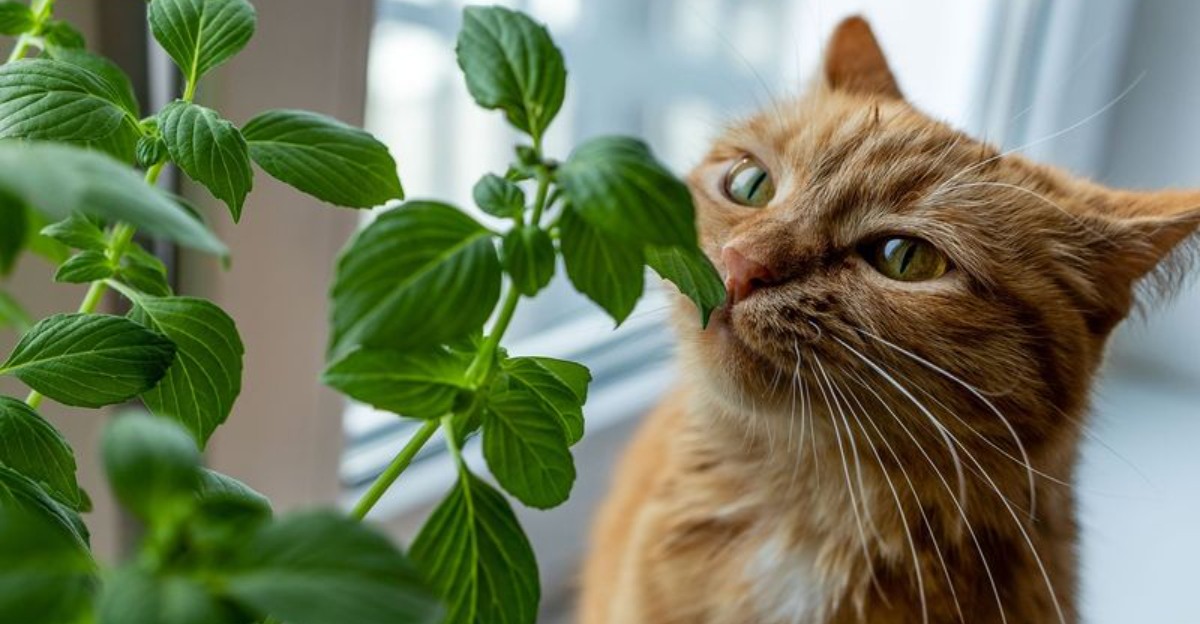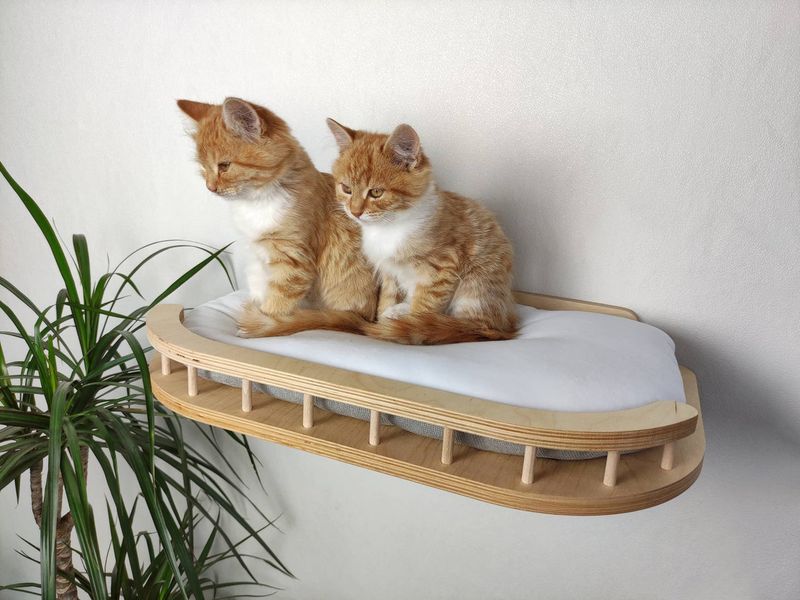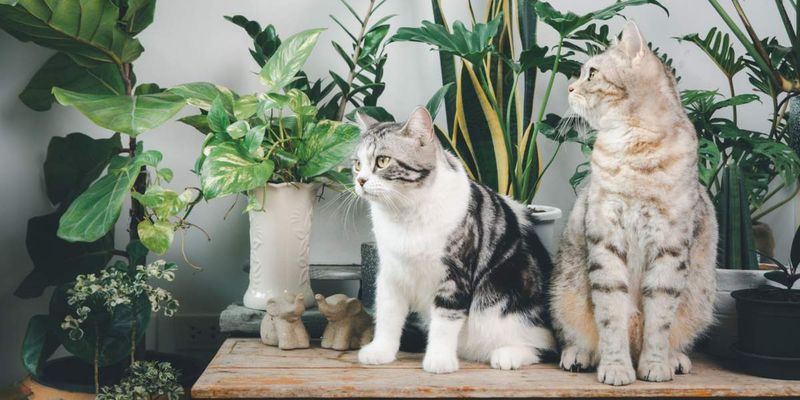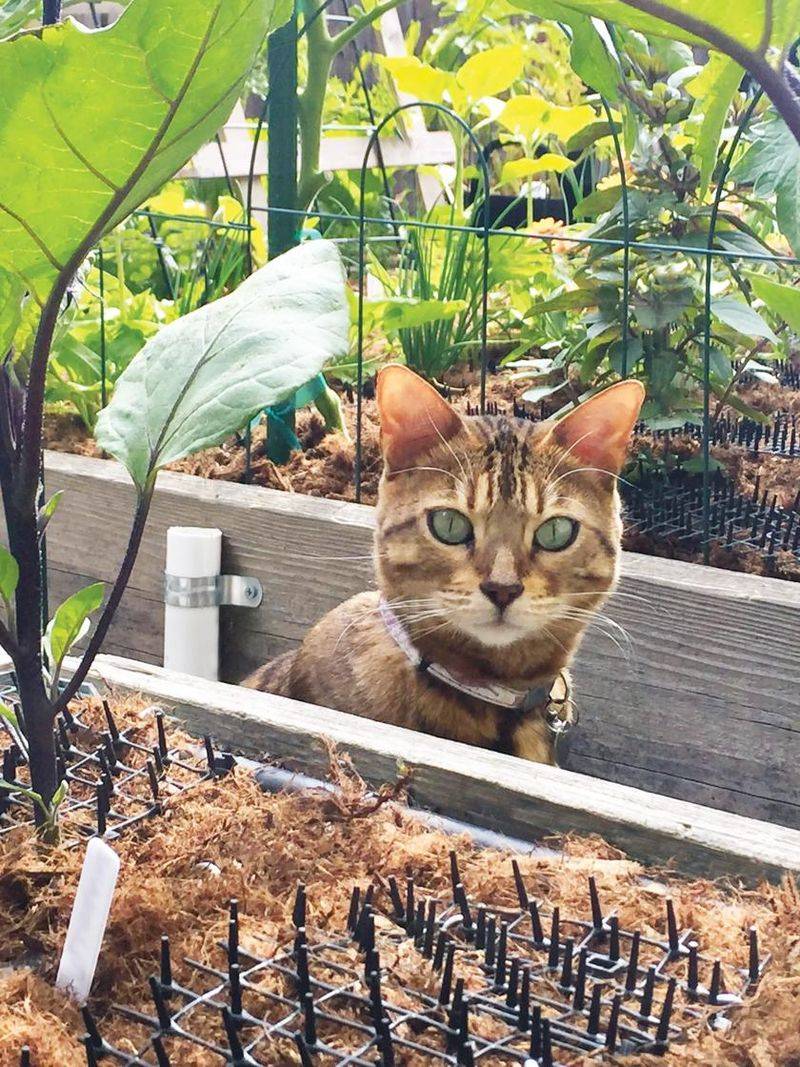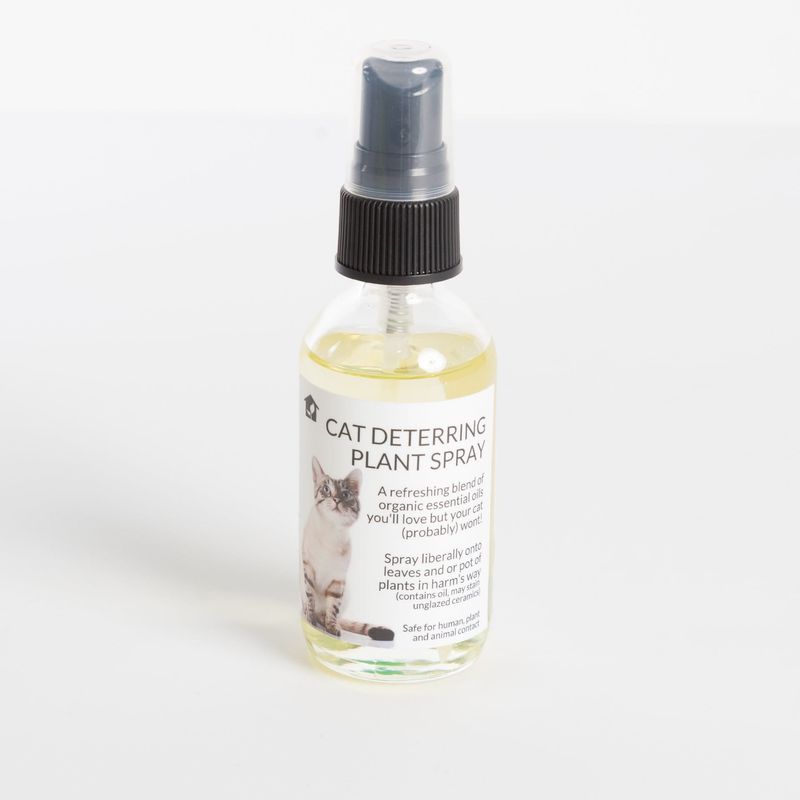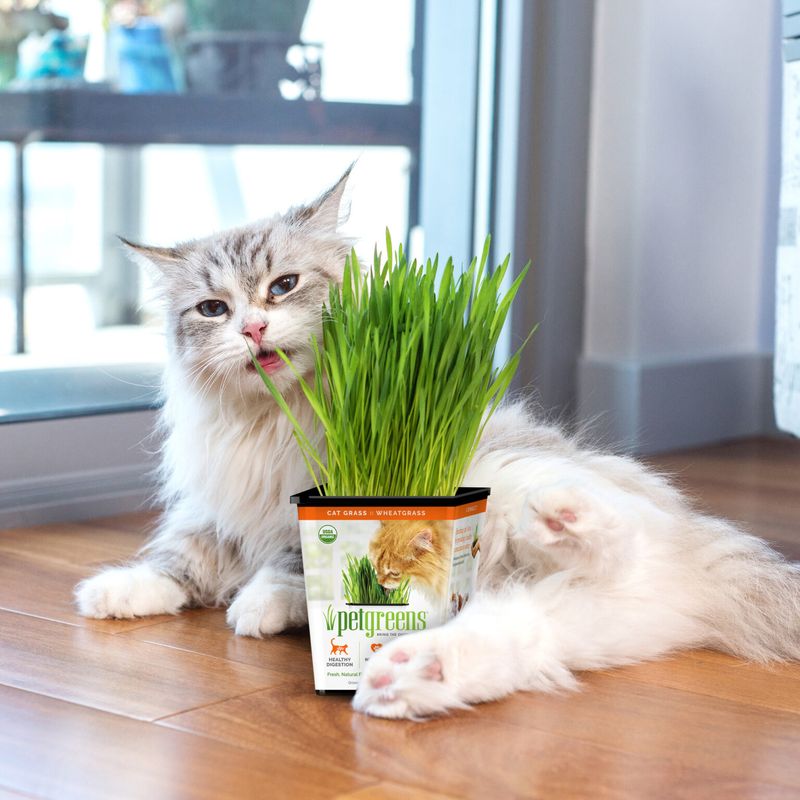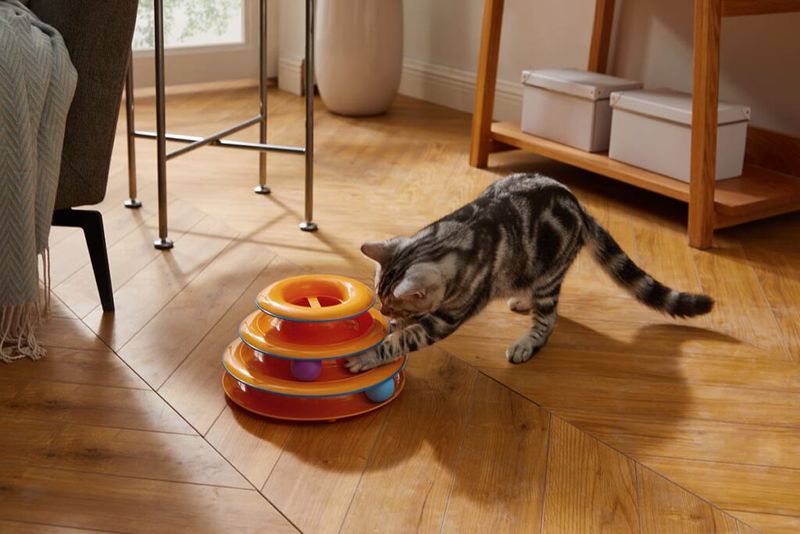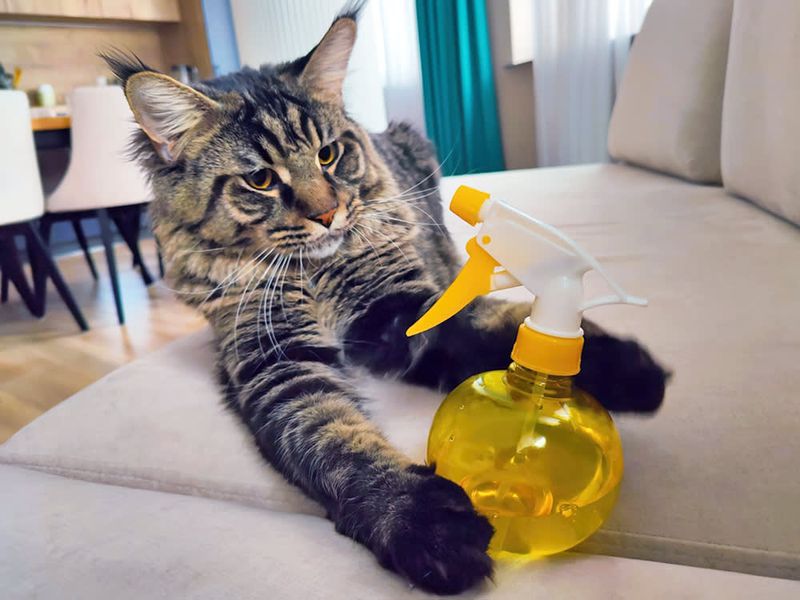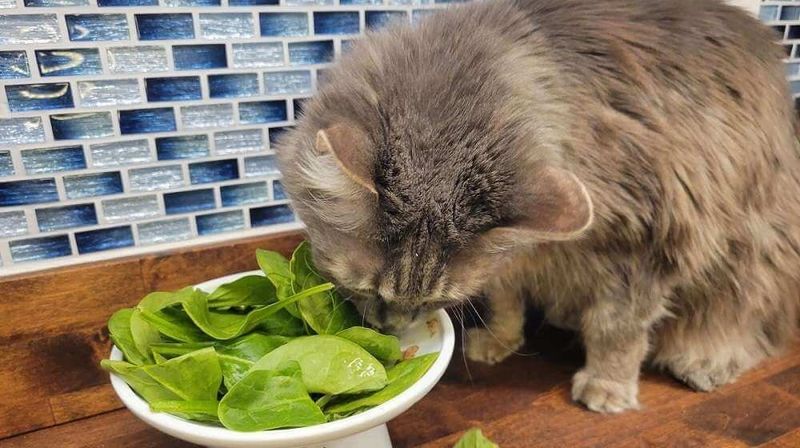📖 Table of Content:
- 1. Move Plants Out of Reach
- 2. Use Citrus Scents
- 3. Add a Physical Barrier
- 4. Try Cat-Safe Deterrent Sprays
- 5. Give Them Their Own Plants
- 6. Double-Sided Tape Trick
- 7. Distract with Toys and Enrichment
- 8. Use Spices Cats Dislike
- 9. Train with a Firm “No” or Gentle Water Mist
- 10. Check for Nutritional Deficiencies
There’s nothing quite like the joy of bringing lush, leafy plants into your home — until your cat decides they’re part of the lunch menu. Whether it’s a quick nibble or full-blown destruction, cats have a knack for turning our indoor jungles into personal salad bars. For pet owners who love their greenery just as much as their feline friends, this can be a frustrating (and often messy) dilemma.
But this isn’t just about aesthetics. Many common houseplants are toxic to cats, which means their curious chewing habits could lead to serious health issues. Even non-toxic plants can cause digestive discomfort if ingested too often. So, finding a solution isn’t only about saving your plants — it’s also about keeping your furry companion safe and healthy.
The good news? You don’t have to choose between your cat and your indoor garden. With a mix of clever deterrents, cat-friendly alternatives, and a little training, it’s totally possible to live in peace with both. Below, we’ve rounded up 10 tried-and-true tips to help protect your plants and redirect your cat’s curiosity in safer, more satisfying ways.
1. Move Plants Out of Reach
Not all plants need to be within paw’s reach. Try relocating your greenery to hanging baskets or tall, narrow shelves that your cat can’t easily climb. Vertical space is your best friend when it comes to cat-proofing. Instead of leaving plants on windowsills or tabletops, think creatively with wall-mounted planters or corner brackets. This method not only deters curious felines but also adds height and texture to your home décor. Even agile cats tend to avoid unstable or less-accessible areas. Ultimately, the less convenient it is, the less likely your cat is to make the effort.
2. Use Citrus Scents
Interestingly, most cats have a natural aversion to citrus smells. You can use this to your advantage by placing orange or lemon peels near the soil of your houseplants. Don’t worry — the scent is pleasant to humans and typically fades over time. As an alternative, dilute some lemon juice with water and mist it lightly around pots or on surrounding surfaces. Be cautious not to spray directly on the plant, as citrus oils can harm some leaves. It’s an easy, affordable deterrent with minimal effort. The more unappealing the plant smells, the less appealing it becomes to a cat.
3. Add a Physical Barrier
Consider making access to the plant more difficult by using physical objects. Place decorative stones, pinecones, or wire mesh around the base of the plant to create a deterrent. Unlike sprays or scents, this method doesn’t wear off with time. It gives your plant a built-in “armor” that many cats won’t bother overcoming. For particularly persistent pets, even a cloche or small garden cage can work indoors. These barriers don’t just keep paws away—they can actually make your plants look more styled and intentional. In short, the right physical obstacle makes trouble just not worth it.
4. Try Cat-Safe Deterrent Sprays
There’s no shame in bringing out the reinforcements. Cat deterrent sprays are widely available and designed to be both plant-safe and pet-friendly. These sprays often rely on bitter flavors or strong herbal scents that cats find repellent. Apply them around the base of your plant and reapply as needed, especially after watering. You may need to try a few brands before finding the one that works best for your pet. Just remember, consistency is key when building an aversion. The more often the cat encounters the unpleasant scent or taste, the more they’ll learn to steer clear.
5. Give Them Their Own Plants
Why not offer your cat a plant of their own? Cat grass (like wheatgrass or oat grass) and catnip are both safe, stimulating, and enjoyable for cats. When provided with an approved outlet for their chewing instincts, many cats lose interest in other plants. Growing a small pot near their favorite napping spot can also serve as enrichment. Rotate the “cat plant” occasionally to keep things exciting. If they know what’s theirs, they’re less likely to invade what’s yours. Sometimes a little sharing goes a long way.
6. Double-Sided Tape Trick
Sticky surfaces can be an effective training tool for discouraging unwanted behavior. Applying double-sided tape around pots or shelves creates an unpleasant sensation when your cat touches it. They typically hate the tackiness on their paws, making them less inclined to revisit. While it may not look glamorous, this is a great temporary method to change habits. You’ll only need it for a short while—most cats learn quickly. Once they associate the area with discomfort, they usually stay away for good. Sometimes a mild inconvenience is all it takes to create a boundary.
7. Distract with Toys and Enrichment
Many plant-chomping cats are simply bored. Combat this by increasing their playtime and offering stimulating toys, puzzle feeders, or interactive games. Cats crave both physical and mental exercise, and enrichment can drastically reduce unwanted behaviors. Consider placing a cat tree or climbing shelf near a window so they can watch birds and squirrels. The more satisfied they are with their environment, the less mischief they seek out. A little daily play can go a long way in keeping them calm. After all, a busy cat is a well-behaved cat.
8. Use Spices Cats Dislike
Not all deterrents need to come from a store. Common household spices like cinnamon, cayenne, or crushed red pepper can be sprinkled on the soil to keep curious noses away. These scents are usually offensive to cats but perfectly safe in small amounts for the plant. Just be cautious not to overdo it—especially with cayenne, which can irritate sensitive paws if touched. The idea is to create a sensory boundary that naturally repels. Spices wear off over time, so reapplication will be necessary. Think of it as seasoning your soil — just not for flavor.
9. Train with a Firm “No” or Gentle Water Mist
Training a cat takes patience, but it’s not impossible. Catch them in the act and use a firm voice to say “no” or make a sharp noise (like a clap). Some pet owners also use a spray bottle with a gentle mist of water — not as punishment, but as a quick redirect. Over time, your cat will start associating the plant with that moment of discomfort. The key is immediate and consistent reinforcement. Don’t punish them after the fact; cats need the cause-effect link to understand. With repetition, your message gets through.
10. Check for Nutritional Deficiencies
Sometimes the behavior isn’t about mischief — it’s about a need. Cats may chew on plants if they’re lacking certain nutrients or fiber in their diet. Before writing it off as behavioral, consult your vet and make sure their food is well-balanced. Adding fiber-rich snacks or cat grass can help satisfy these needs naturally. It’s also possible your cat is experiencing mild nausea or digestive discomfort and is self-medicating, so don’t ignore it. Understanding the “why” behind the chewing leads to better solutions. A healthy cat is usually a less destructive one.
